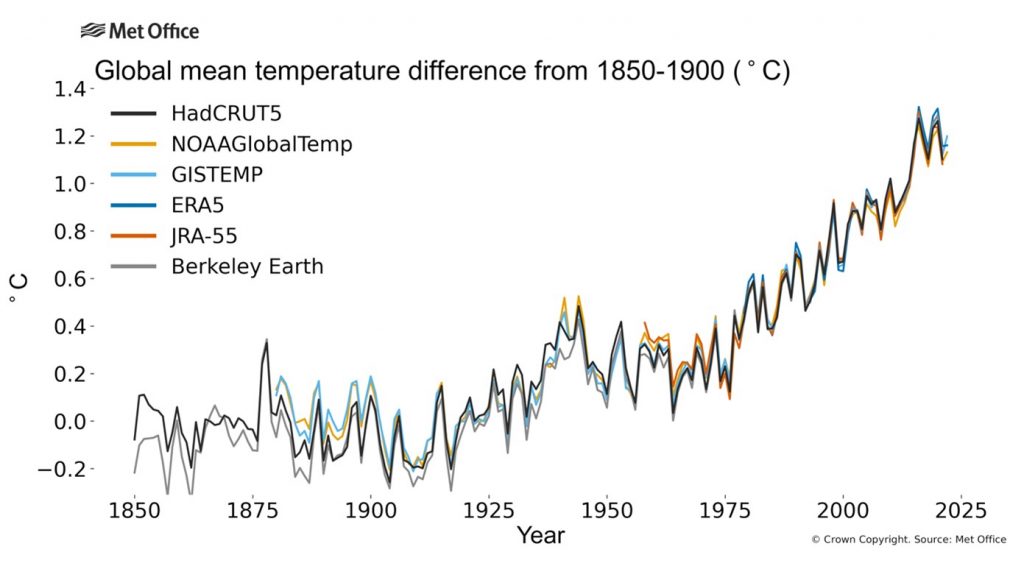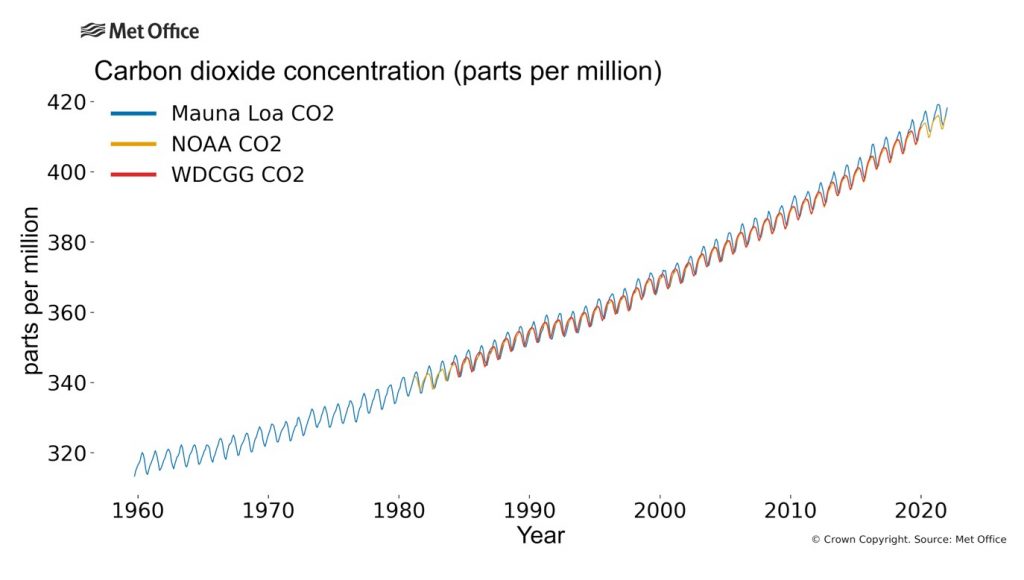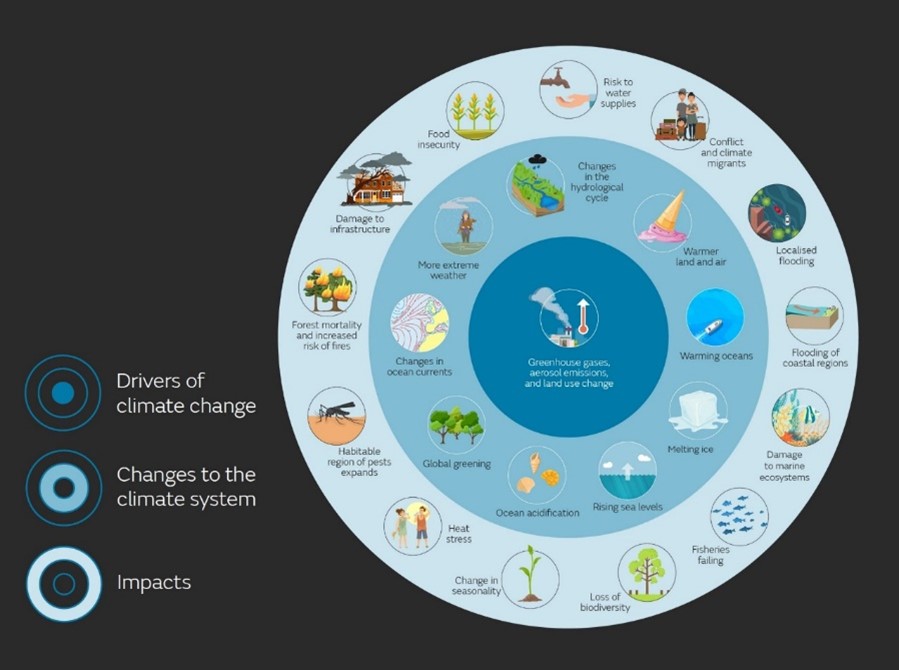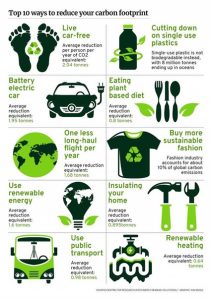In recent years, climate change has become an increasingly widespread topic of conversation among social and mainstream media. With powerful imagery from global protests around the world and an increase of destructive and severe weather reports emerging onto our screens; recent events have encouraged a gradual shift in public perception, seeing our rapidly changing climate as less of a distant problem and more of a very present and very real disaster. We’ve seen the devastating impacts of climate change on land but how does it affect Earths largest and most important ecosystem, the ocean, and how can we best protect it?
What is climate change and how does it affect the ocean?
Climate change refers to the change in climate and weather patterns over a prolonged period of time (Met Office, no date). While history has documented natural fluctuations over previous centuries as a result of cyclical events, the industrial revolution saw the beginning of an ever growing and unceasing upward trend, with both CO² and global temperatures rising at a rate never seen before in recorded history. These concerning increases stand in correlation with modern anthropogenic activities, with the substantial increase in fossil fuel combustion and changes in land use held primarily responsible. This has resulted in the release of vast amounts of greenhouse gases, such as CO², into the atmosphere at a rate in which the Earth cannot rid of in sufficient time, thus causing an imbalance. These excess greenhouse gases have built up within the atmosphere over time, trapping heat from the sun and causing a warm blanket around the Earth, simultaneously warming the oceans (Met Office, no date).


Why is it an issue?
A warmer planet means an increase in more severe and potentially life-threatening weather events such as heatwaves and storms. These dangerous conditions can often result in fires, floods and water droughts leading to natural and infrastructural damage, impacting communities and livelihoods on a global scale. Furthermore, rising temperatures are negatively impacting the world’s oceans and are leading to ocean acidification, sea level rise, and a rise in water temperature (Met Office, no date). These factors significantly threaten ecosystems both above and below the ocean surface.
The ocean is Earth’s largest ecosystem and plays a vital role in planetary functions, such as the mediation of weather systems to carbon cycling and sequestration (Sumaila and Tai, 2020). The oceans cover over 70% of the Earth’s surface, and have absorbed approximately 90% of the heat generated from greenhouse gas emissions (United Nations, no date). This rapid absorption of heat has brought forth the estimate that by 2100, mean sea surface temperature is predicted to increase by somewhere between 1°C and 3°C (Hoegh-Guldberg and Cai, no date). While this may not seem a lot in theory, this could cause irreparable damage to the marine environment and all life that exists within and around it.
Climate change and cetaceans
Rising temperatures not only pose a threat to humans, but profoundly affect the vast diversity of marine organisms within the ocean. Scientific studies have seen a clear correlation between the decline in global marine biodiversity with global warming (Whitehead et al., 2008), shadowed by the sobering prediction that more than half of global marine species could be nearly extinct by 2100 (United Nations, no date). Large scale latitudinal variation across different species has been observed in recent decades, shifting from low latitudes to higher latitudes and deeper waters (Whitehead et al., 2008; Sumaila and Tai, 2020), suggesting tropical areas could particularly suffer further biodiversity losses in the near future. Not only will this imbalance the food chain within the marine environment but rising temperatures exceeding the optimal range for different species could see negative implications to their biological performance such as growth rates, reproductive success, phenology patterns and survival rates (Sumaila and Tai, 2020).
Cetaceans are among an abundance of marine life documented to be both directly and indirectly impacted by climate change (Simmonds and Eliott, 2009). Often characterised by their regular and vast migratory movements from breeding to feeding sites (Whitehead et al., 2008), studies suggest a rising climate is seeing significant changes in their spatial distribution (Albouy et al., 2020). While many factors can affect their distribution such as habitat availability, cetacean distribution is particularly reliant on the availability of prey, and with fish abundance being decreased by the likes of climate change and overfishing, this could cause serious implications in terms of their survival (Simmonds and Eliott, 2009). However, the level of impact is likely to vary among species, with rising temperatures particularly a problem for those with restrictions to their geographical distribution, as opportunities to expand their range if necessary are limited (Simmonds and Eliott, 2009). For example, in the UK over the past three decades there have been increased reports in sightings and strandings of two species better adapted to warmer waters, the short beaked common dolphin (Delphinus delphis) and the striped dolphin (Stenella coeruleoalba). In contrast, there have been decreased reports of two species more adapted to colder waters, the white beaked dolphin (Lagenorhynchus albirostris) and the Atlantic white sided dolphin (Lagenorhynchus acutus) (Simmonds and Eliott, 2009; Williamson and Taylor, 2021). This could suggest species that have better adapted to the colder waters could struggle to adapt to the rising temperatures and ultimately be at greater risk of extinction as temperatures continue to rise. Not only can these factors cause significant stress to the animals, but it can also affect their abundance, reproductive success, cause imbalances in the food chain, alter migration behaviour and community structure, and ultimately impact their survival rate (Albouy et al.,2020; Simmonds and Eliott, 2009).
While studies are ongoing, a lack of understanding still remains over the vulnerability of cetaceans in connection to a warming climate. With over a quarter of cetaceans considered threatened by the IUCN (ICUN, 2022), this is an area that needs to be widely studied in an environment that needs to be thoroughly protected.
What can we do to help?
While a great deal of damage has already been caused, there are multiple ways in which we can all help and do our bit to protect the planet and the marine environment. Not only is reducing our carbon footprint important by reducing emissions at the source, but climate change induced impacts are further exacerbated by additional anthropogenic activities such as overfishing, noise pollution and chemical/physical pollution, putting the already vulnerable marine environment at greater risk. Monitoring the marine environment is another important way we can help, by supporting and volunteering with organisations such as the Sea Watch Foundation. Getting involved in the monitoring of cetaceans and researching how climate change is impacting marine life helps us to understand how we can best protect them going forward.
Reducing your carbon footprint
Reducing your carbon footprint is an important way in which we can try to mitigate the climate crisis. Whether it’s trying meatless Mondays, supporting more sustainable fisheries, going plastic free or visiting your local thrift store, small changes from everyone can ultimately make a big difference.
Volunteering
Supporting marine and environmental organisations can greatly help with protecting our planet. Whether it be contributing funds to help aid scientific research or contributing your time, a little goes a long way when we collectively work together to make the world a better and safer place.
At Sea Watch Foundation, interns and volunteers contribute to scientific research by monitoring cetaceans, gathering essential data and raising awareness to the general public. With an increasingly warmer ocean, it is important that we monitor these animals in order to better understand our impacts and increase our knowledge on how best to protect them and their environment in the future.
For more information on how you can help with the Sea Watch Foundation or to learn more about the work that we do, please visit our website.
Rachael Anderson Features Writer References Albouy, C., Delattre, V., Donati, G., Frolicher, T.L., Albouy-Boyer, S., Rufino. M., Pellissier, L., Mouillot, D. and Leprieur, F. (2020) ‘Global vulnerability of marine mammals to global warming’ Scientific Reports, 10 (548). Effects of climate change (no date) Available at: https://www.metoffice.gov.uk/weather/climate-change/effects-of-climate-change (Accessed: 5th September 2022). Hoegh-Guldberg, O. and Cai, R. (no date) ‘The ocean’, IPCC, 30. How is climate change impacting the world’s ocean (no date) Available at: https://www.un.org/en/climatechange/science/climate-issues/ocean-impacts (Accessed: 5th September 2022). Marine Mammals in UK Waters and Worldwide (2022) ICUN Cetacean Specialist Group. Simmonds, M.P. and Eliott, W.J. (2009) ‘Climate change and cetaceans: concerns and recent developments’, Journal of the Marine Biological Association of the United Kingdom, 89 (1), pp 203-210. Sumaila, U.R. and Tai, T.C. (2020) ‘End Overfishing and Increase the Resilience of the Ocean to Climate Change’, Frontiers in Marine Science. What is climate change? (no date) Available at: https://www.metoffice.gov.uk/weather/climate-change/what-is-climate-change (Accessed: 4th September 2022). Whitehead, H., McGill, B. and Worm, B. (2008) ‘Diversity of deep-water cetaceans in relation to temperature: implications for ocean warming’, Ecology letters, 11, pp 1198-1207. Williamson, M.J. and Taylor, N.L. (2021) ‘Cetaceans as sentinels for informing climate change policy in UK waters’, Marine Policy, 131.


























